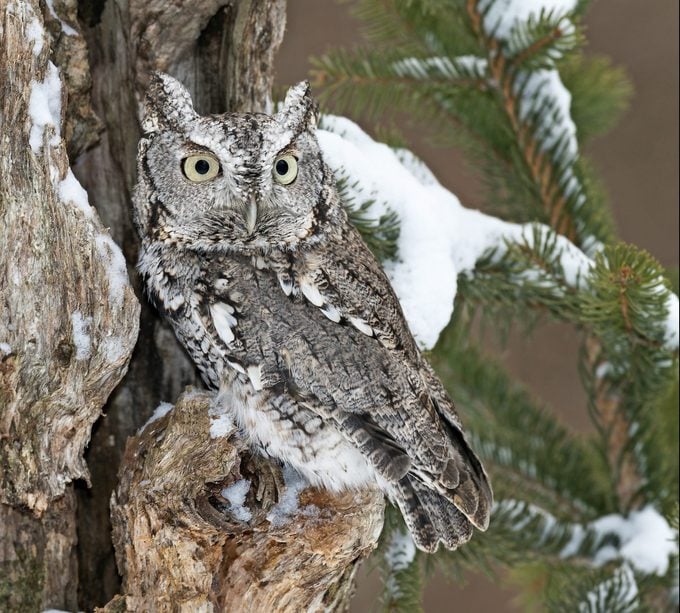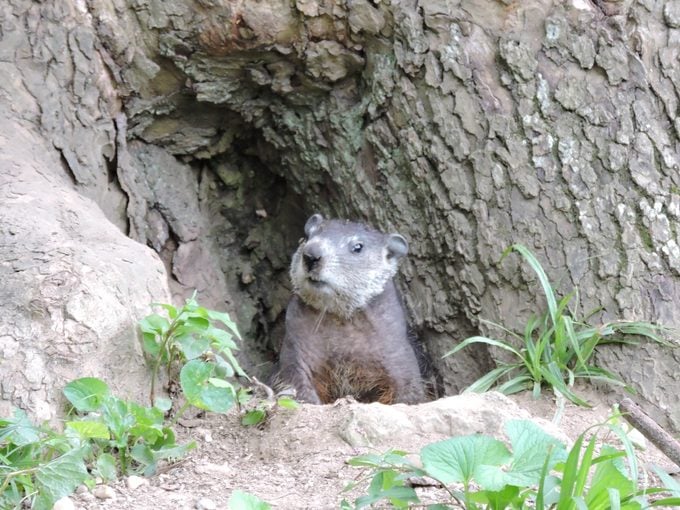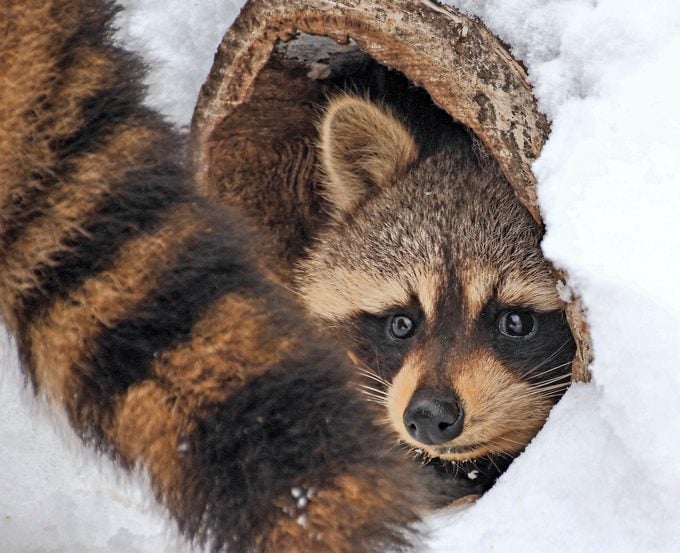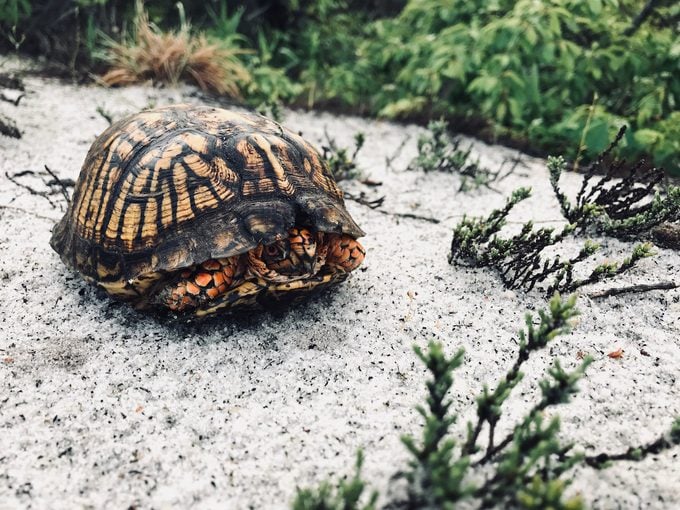Winter Wildlife: Animals That Hibernate in Your Yard
Updated: Nov. 28, 2023
Learn about animals that hibernate in your backyard and their winter habits. Find out how raccoons, chipmunks, groundhogs, bats, frogs and more hibernate.

Many backyard guests—such as monarch butterflies and orioles—make for warmer climates as temperatures drop. The rest hunker down. How they prepare and where they lay their heads sometimes differ even within the same species. But no matter how they overwinter, animals that hibernate do it for the same reason: to conserve energy. How do hummingbirds survive snow and cold weather?
As days shorten, animals take the cue from Mother Nature and add layers of fat while food is more available. “These reserves essentially act as a big bank of energy that animals draw from while they’re in the deep-sleeping state of hibernation,” says Kevin Brunke, natural history biologist with the Missouri Department of Conservation.
To make those reserves last, animals lower their metabolism and body temperature and slow their heart rate and breathing. “They burn fewer calories while they wait for more favorable foraging opportunities to become available,” Kevin says.
Find out how you can help birds during cold winter weather.
Animals That Hibernate: Deep Sleepers

Hibernation champs include groundhogs, ground squirrels, meadow jumping mice and some species of bats. These bona fide hibernators remain in a state of inactivity for several days, weeks or months and can sleep through loud noises and other commotion.
Do Groundhogs Hibernate?
Groundhogs hibernate inside burrows below the frost line in wooded or bushy areas for as long as 150 days. During that time, a groundhog’s heart rate slows from 80 beats per minute to an amazing five beats per minute, and its body temperature falls from 99 degrees to as low as 33 degrees.
Do Bats Hibernate?
Little brown bats hibernate even longer. They stay inactive for more than six months in barns, hollow trees and attics, sometimes with other bats for warmth.
Discover 9 features to look for in a bat house.
Animals That Hibernate: Light Nappers

Opossums, raccoons, skunks and chipmunks enter a sort of mini-hibernation called torpor, in which they conserve energy for a short period, then wake to find food when temperatures rise and weather improves, according to Kevin. “Animals do this because their body’s regular metabolism is so high it would burn up all their energy reserves while they’re sleeping,” he says.
Where do birds sleep at night?
Do Raccoons and Chipmunks Hibernate?
When the animals wake, they carry on as usual. Raccoons leave their dens in hollow trees, barns, sheds and crawl spaces to look for food. Chipmunks occasionally emerge from their underground burrows (or from under decks, sheds and foundations) to retrieve food from hidden caches.
Do Mice Hibernate?
Field mice leave their nests under tree stumps, rocks, decks or porches (or even in houses accessed via cracks in the foundations) to nibble on stored food.
Do Birds Hibernate?
Some backyard birds also go into torpor. Chickadees, doves, hummingbirds, titmice and small owls may become inactive for a few hours or overnight. Favorite roosting spots for many birds include birdhouses, tree cavities and evergreens.
Learn how to create winter shelter for birds.
Animals That Hibernate: Cold-Blooded Creatures

Unable to generate their own heat, cold-blooded animals like reptiles and amphibians survive frosty temperatures and scarce resources by slowing down considerably and oftentimes becoming inactive.
Do Frogs and Turtles Hibernate?
Frogs and salamanders can escape freezing temperatures by burrowing in the mud on the bottoms of ponds, and turtles by burying themselves in soft ground below the frost line. “They just need to get down deep enough to where the earth doesn’t freeze solid,” Kevin says. “During warm periods, cold-blooded animals may become active.”
Wood frogs, common box turtles and some salamanders burrow in leaves and actually freeze. Their bodies produce glucose that acts like an antifreeze that protects their cells and, come spring, they thaw out.
Animals That Hibernate: Insects
To survive freezing temps, insects become inactive and stop growing. They go dormant at various life stages. Some lay eggs before they die, so new insects can emerge in spring. Others dig themselves underground as larvae. A few are able to endure winter as adults, producing a natural antifreeze. Psst—check out these easy ways to help bees.
Do Bees Hibernate?
In the case of bumblebees, only the queen survives the coldest months, while the rest of the colony dies. After mating with males and feeding on pollen, the queen leaves the nest to find a place to hibernate. “Usually, it’s a small pocket in the soil or another little cavity where she’ll live off those fat stores,” says Kelly Gill, a senior pollinator conservation specialist for Xerces Society for Invertebrate Conservation.
More than 3,000 species of solitary bees in the United States remain awake and somewhat active in winter, occupying hollow plant stems, abandoned beetle burrows, underground tunnels or dead standing trees. But the stage at which they overwinter varies. For example, mason bees will overwinter as adults in their cocoons, while leafcutter bees spend the season as larvae.
Honeybees overwinter as a colony in their hive, clustering around the queen and vibrating their flight muscles to generate heat. “They’re not hibernating,” Kelly says. “They’re active and just kind of waiting out the winter.”
Next, learn how does a butterfly survive winter?




















